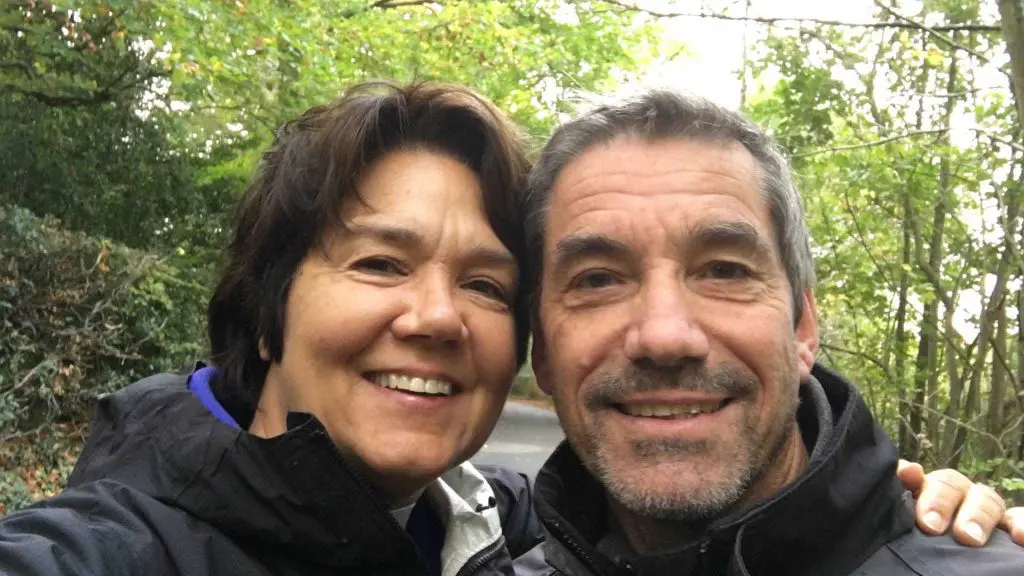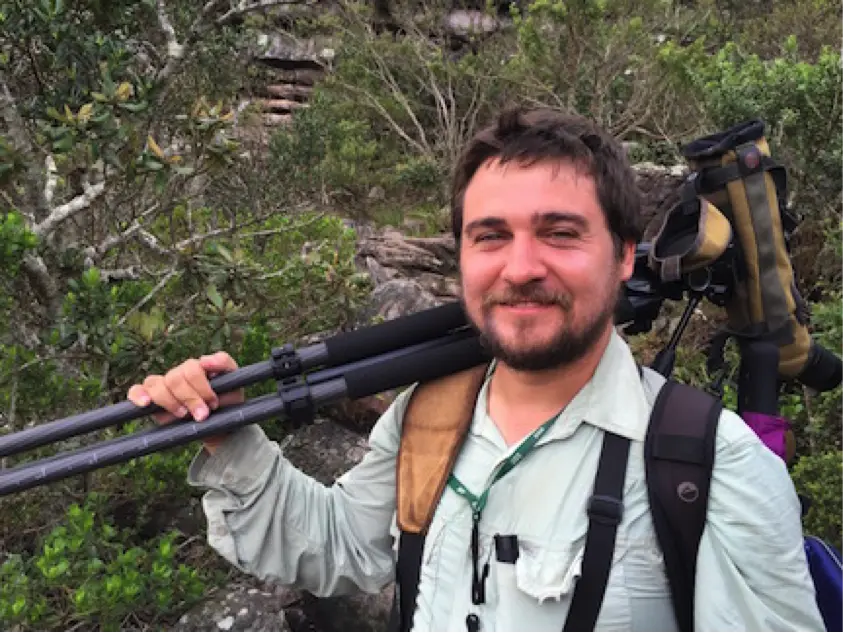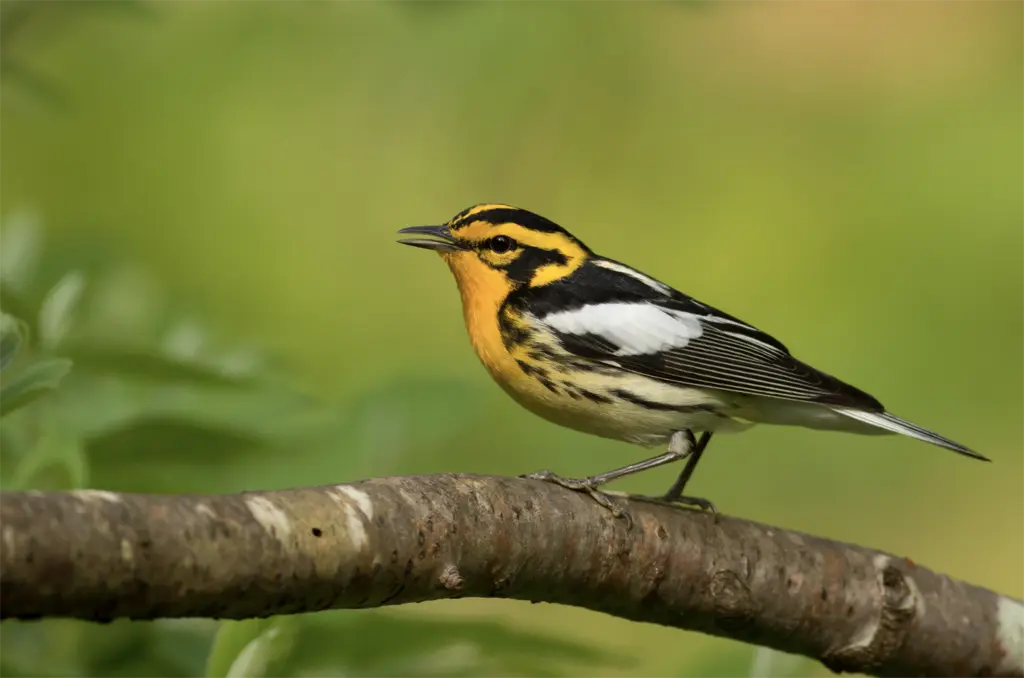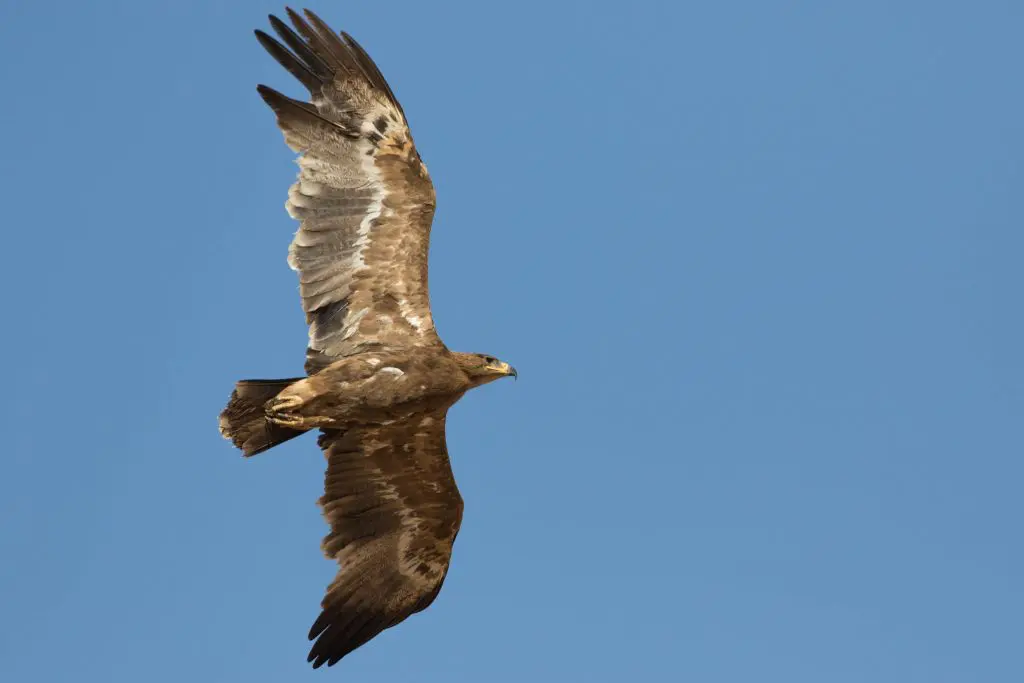Features
Birds of a Feather: The Warblers
Have a look at our third feature in the series Birds of a Feather, this one focused on warblers, a diverse and spectacular group of small passerines. This feature has a strong focus on New World warblers, but we also show off some of the birds with the same moniker from the Old World, though birds from the two hemispheres are from completely different lineages. Lots of beautiful birds to see in this feature, with some great info about them in the captions!
Birds of a Feather: Eagles
Have a look at our second feature in the new series Birds of a Feather focuses on eagles , or, more precisely, on raptors that have “eagle” in the name. Our series is partly an excuse to jump from continent to continent and enjoy some of the highlights from past (and future) tours, but we hope to provide some “big picture” on these big raptors, too, and a few finer points about their biology, behavior, identification, and taxonomy. Eagles, of many stripes, are found on almost 95% of our tours, and they’re usually huge and impressive, so they make excellent ambassadors for their respective tours. It’s always a good day to see an eagle. So sit back with a cocoa, tea, or coffee and take a virtual trip with us on a quest for eagles!
Megan, Mike, and the Half-Acre Project

If you’re like most of us, you probably keep a list of the birds that you’ve seen in your yard. You could probably make a list of the mammals, reptiles, and amphibians you’ve seen there too. But guide Megan Edwards Crewe and her husband Mike are taking their yard-listing in Norfolk, England to another level entirely. Inspired by a woman in Leicester who found more than 2600 species on her suburban plot over a 30-year period, they’ve set out to document every species that occurs in their half-acre, rural garden. That means putting a name to every plant, insect, fungus, mollusk, and arthropod as well as all the “regular stuff,” and it’s proving to be quite the challenge.
So far, in their first year of effort in what they call their Half-Acre Project, they’ve tallied more than 850 species, including a number that are new for their corner of England. (All records, with photographs, are being entered into the U.K.’s National Biodiversity Network records database, so that they can be used by the scientific community.) They’ve also had scores of species they haven’t yet been able to put a name to. “Bees are tough,” Megan says. “So are hoverflies! Before we started this project, I had no idea there were so many.” She confesses to having spent many hours flat on her stomach in the garden, watching and photographing the tiny denizens that had escaped her notice in previous years. And she adds that she can now identify far more of the plants and insects that are common across Europe–certainly a boon for anybody who travels with her to Britain, France, or Greece! Check out the Half-Acre blog (and maybe start your own project in this New Year?)!
Guide Marcelo Barreiros: A little background

Congratulations & cigars are in order for our amazing guide Marcelo Barreiros, who with his wife, Renata, welcomed a little daughter, Lia, into the family last August! Marcelo and family now make their home in Jacareí, northeast of Sao Paulo, not far from very nice Atlantic Forest habitat (and beautiful beaches) and not far from where Marcelo grew up. His path to Field Guides was a winding one. After college (majoring in biology), he earned a two-year fellowship to work with Harpy and Crested eagles in the Amazon Basin, which gave him the chance to travel across much of Brazil. Specifically, he mapped new nests and placed gps/vhf transmitters on the young in order to understand their dispersal from their natal territory. Marcelo writes: “This work immersed me in the entire Amazonian avifauna and in the reality of local communities. When the fellowship ended in 2011, I decided to stay in Manaus and continue working with birds, doing environmental consulting and research.”
It was in Manaus that Bret Whitney and Marcelo Padua met Marcelo, while they were preparing for the Rio Negro Paradise Tour. After working with Bret for several more years, Marcelo accepted the offer to come to Field Guides full-time. How lucky we are! His upcoming tours in 2020-2021 include a dizzying array of 14 Brazil tours, a Trinidad & Tobago turn, plus the Guyana: Wilderness Paradise tour that makes such a great introduction to the joys of birding in virgin primary rainforest. (Still space available on the March 28 departure!) Participants on Marcelo’s tours have sent us glowing words on his outstanding field skills, natural warmth, and logistical legerdemain. Oh, and one more thing: in Brazilian Portuguese, the double ‘r’ is pronounced more like an ‘h’ (for those with Spanish or Italian skills who might assume a rolled ‘r’), so it’s “ba-HEH-ros.” It never hurts to get the guide’s name right the first time!
A THROWBACK From the 1996 Field Guides archives:
NE Brazil: Last-chance Pickup
If you’ve traveled with us before, I’m sure you’ve heard tall tales and humorous anecdotes from your guides. Over 35 years of Field Guiding, we’ve accumulated quite a few! Every year at our late-August business meeting, with as many of us as possible gathered together from the field and our Austin office, our Field Guides step forward to add new ones to the archives. But we don’t forget the past…

It was the Ides of March 1996. I was leading a small group of birders through the hinterland of northeastern Brazil on our fourth Field Guides tour to that fascinating region. Having spent much of the previous ten years in Brazil, and living in Rio at the time, my pork-n-cheese, I mean Portuguese, was getting pretty good. I would need it that memorable day, the day we set out for Lear’s Macaw in the arid outback of the vast state of Bahia.
You see, the Lear’s (or Indigo) Macaw is a mighty rare bird. For most of ornithological history it was known from only a few specimens that had come to light through the cage-bird trade. Then, in late 1978, a few months after I graduated from Earlham College, Helmut Sick (the German “father of Brazilian ornithology”) and two students set off from Rio de Janeiro to traverse the northeast in hopes of discovering the secluded stronghold of Lear’s Macaw. At the time, this ranked among the top ornithological mysteries yet to be unlocked, and the team had to start from near “zero.” But luck and a healthy dose of perseverance were with them. At dusk on 31 December 1978, they became the first ornithologists to encounter these magnificent macaws in nature. In the following days, they discovered the breeding area in the remote Raso da Catarina of interior Bahia where the birds nested on high cliffs in rugged canyon country. What an incredible thrill it all must have been! Imagine a spectacular bird like this being discovered alive in the wild as recently as 1978!

favored food source, the licuri palm
Today, there are probably fewer than 500 individual Lear’s Macaws surviving in this same core area of north-central Bahia. The birds receive reasonably effective protection (at least in the main breeding area), but their natural reproductive level is low and their numbers are easily decimated by hardships of the environment exacerbated by ongoing attempts to capture and smuggle out young and adults for sale on the black market. Finding Lear’s Macaws in the wild, hearing their strange voices and admiring their beautiful indigo plumage set off by striking yellow patches on the cheeks, orbital skin, and tip of the tongue, is one of the great quests we expect to realize on every Northeastern Brazil tour we offer. And we have been successful all 17 years now, but that 1996 trip was a close call…

and cacti near Petrolina
We departed that day pre-dawn from Petrolina, Pernambuco, a busy town of some 250,000 on the great Rio São Francisco. I had a small group that year, only seven participants, and our vehicle was a “12-passenger” van. That translates to room for 8 adult gringos and their usual massive amount of luggage — and nothing else. Consider that a couple of the boys in the backfield were pretty big fellas, Jim Plyler and David Galinat, with skyscraping Jane Brooks cheerleading all the way, and you get the picture: we were loaded to the max! Tom Raque, John and Barbara Ribble, and Polly Rothstein rounded out the group. We were in exceptionally high spirits, because we had found a pair of Buff-fronted Owls a few days earlier and had seen the last wild Spix’s Macaw only yesterday (that bird sadly disappeared in late 1999). Our route would take us across the river and eastward along that little black line you can still see on today’s maps, through Poço de Fora, Uauá, Bendegó, and Canudos all the way to Jeremoabo. It’s 250 km of rocky dirt road, narrow and potentially muddy in places; one impasse along the way (serious mud, broken-down vehicle blocking the road, bridge washout…worse yet, your vehicle dying), and you backtrack to make the swing over the top of the São Francisco and down through Paulo Afonso — in other words “game over,” you missed Lear’s Macaw and you have to use another day in hopes of getting it right (but see Note 1 at the end of Part II).

Our day seemed to be going well enough, albeit slow and steady as we kicked up a rolling cloud of dust and braced against the constant bashing of rocks on the floorboards. Goats and sheep trotted ahead of us, scampering off the road just before we bumped them off, bells clanging on all sides. A veritable plague in northeast Brazil, these animals eat everything from the roots up allowing essentially no regeneration of native vegetation — but they are the lifeline of many poor families in northeast Brazil, the only livestock able to survive the harsh dry seasons. We took advantage of the cool, early hours for a couple of birding stops. Then, just 60 km into the drive near Poço de Fora, we blew a tire. The spare got us another 50 km to Uauá. Uauá is on the map, but just barely. I am here to tell you that Uauá had a borracharia, and thank goodness for it (Spanish-speakers, see Note 2 at the end of Part II!). The greasy-armed, smiling little man who came out to greet us was the usual, hard-working Bahian soul who resolves problems with genuine interest and hospitality, and we were soon on our way with all five tires. But the road was merciless. I gritted my teeth against sharp rocks and tried not to think about our weight and low clearance. We made it the 40 km to Bendegó, but blew another tire halfway to Canudos, this time irreparably. The spare again did its job, getting us to Canche. But we had no “spare” at that point, and the way things had been going, I saw little chance of us making it to Jeremoabo that night. Unless, that is, we could somehow get another tire…

sights in NE Brazil.
Limping gingerly through Canche, a place with apparently no wheeled vehicles larger than wheelbarrows, we came to a bar at the far edge of town. There were three pickup trucks parked at odd angles in front of the place. Our driver pointed out excitedly that one of them had tires just the size we needed. “Graças a deus,” I thought to myself as I asked the group to wait a moment and I went in to find the owner of that last-chance pickup. The sun was still about 30 degrees above the horizon, and it took my eyes a minute to adjust to the hot, dark interior of the bar. Waving flies out of my face but not the smell of drying cachaça (Brazilian aguardiente) from my nose, I asked loudly (“polite” would not be appropriate in this setting), “Opa! Quem é o dono daquele pickapy verde?” (“Hey! Whose is that green pickup out there?”). Faces stayed down on tables, not a sign of life in the joint. I gave three loud claps and repeated the question. A head came up and a red-eyed, scraggly-bearded guy about 30 or 50 said, “Quem quer saber?” (“Who wants to know?”). Time to get a little more polite. I said that I was passing through town and needed to buy his spare tire, and could we go look at it. He slumped back down and said he didn’t have a spare. I said no matter, any tire in decent shape would do. He thought about that for a minute, then raised up to exclaim in no uncertain terms, “Look, dumb___, I DO NOT HAVE A SPARE!” Time to get quite polite. I sat down and introduced myself to this deeply drunken man, explaining that I had a group of innocent and aged tourists out there needing to make it to Jeremoabo in the worst way (nothing about the macaw to muddy the picture; apologies to all of you who were there with me that day). He was unimpressed, and reiterated that there was not a thing he could do about it.
All tour leaders the world over will now chime in in agreement that there is indeed one thing that will resolve an issue such as this one (as well as almost anything else of material worth): money. I offered him the equivalent of about $60 for the tire of my choice. Unbelieving, I guess, he looked at me for a long, cross-eyed moment as he processed this new information, and grinned as he stood up. We walked (staggered, more like it) out into the blinding sunlight. Leaning on the truck, he paused (I feared he was going to hurl) then raised his arms silently as if to say, “Go ahead, she’s yours, just take it!” Our driver had the best tire off that truck and on to our van (bad tire already off) in a flash. We left the pickup on a block of wood and I shook hands with the guy as I gave him his money. He expressed no apprehension at having so handcuffed himself to that bar; his world hadn’t changed significantly (yet). I thought to myself that I envied him being able to do that, to just let things play out as they would “amanhã” (mañana). And I entertained the idea that he might be one heckuva nice guy even as it occurred to me that he had very few brain cells firing forward.

Macaws in sight…
But forward, onward, it was for us. With renewed but not replenished confidence, we continued our eastward way from Canche. The sun was getting low as we pulled up to the reliable feeding area of Lear’s Macaws that I had come to know over the past several years. I’d prepared folks for the possibility that we were too late that day, that we might well have to take tomorrow morning to retrace a long section of bad road from Jeremoabo to have a chance at finding the macaws. Our ears were ringing from the pummeling of that relentlessly rocky road. We walked into a dry, yellow pasture studded with low licuri palms, the favored food plant of the macaws. Several long minutes elapsed. A Burrowing Owl gazed lazily in our direction. We scanned the palms and tall shade trees for dark, long-tailed shapes within…then it happened. First calls of distant birds, then Tom picked up a pair flying through a gap in the trees. Minutes later, we had the scopes on several brilliant Lear’s Macaws as they preened in treetops and flew around calling loudly just before departing the feeding area for the distant cliffs of Raso da Catarina. We’d made it!! The day was an overwhelming success despite a heavy dose of frustration along the way — but isn’t that so often the way on a birding trip? Just when you fear all is lost, the best pulls through and what was a desperate mess becomes a good story.

Now, I wish that were the end of the story for that day. But we had 50 km of nasty road between us and our simple little hotel in Jeremoabo and, all agreed, little chance of making it on the rubber we had. We optimistically resolved to take it really slowly and just “think light.” But only about 10 km along the way, we lost another tire which sent us from orange to red alert (despite the world being a lot more peaceful place back then). As our tour itinerary says to this day, “…if the tire and radiator gods are with us, we will see Lear’s Macaw, not a moment too soon.” Well, the gods fortunately were with us, though working in mysterious ways, and we did make it to the hotel for a good, home-cooked dinner washed down with lots of cold beer. We toasted the Lear’s Macaws heartily that night, “Long may they live!” And I quietly toasted the drunk in Canche, as I have done a number of times since.
O Fim (The End)
A couple of notes

(1) The road through Uauá and Canudos is in much better shape these days, and our huge (Greyhound-sized), comfortable bus lets the miles slide by painlessly. Yes, some things do improve over the years!
(2) You Spanish-speakers out there are no doubt raising an eyebrow (“borracho” meaning “drunk”), but rest assured that this is merely the equivalent of a vulcanizadora, a tire-repair shop (“borracha” in Portuguese is “rubber”).



